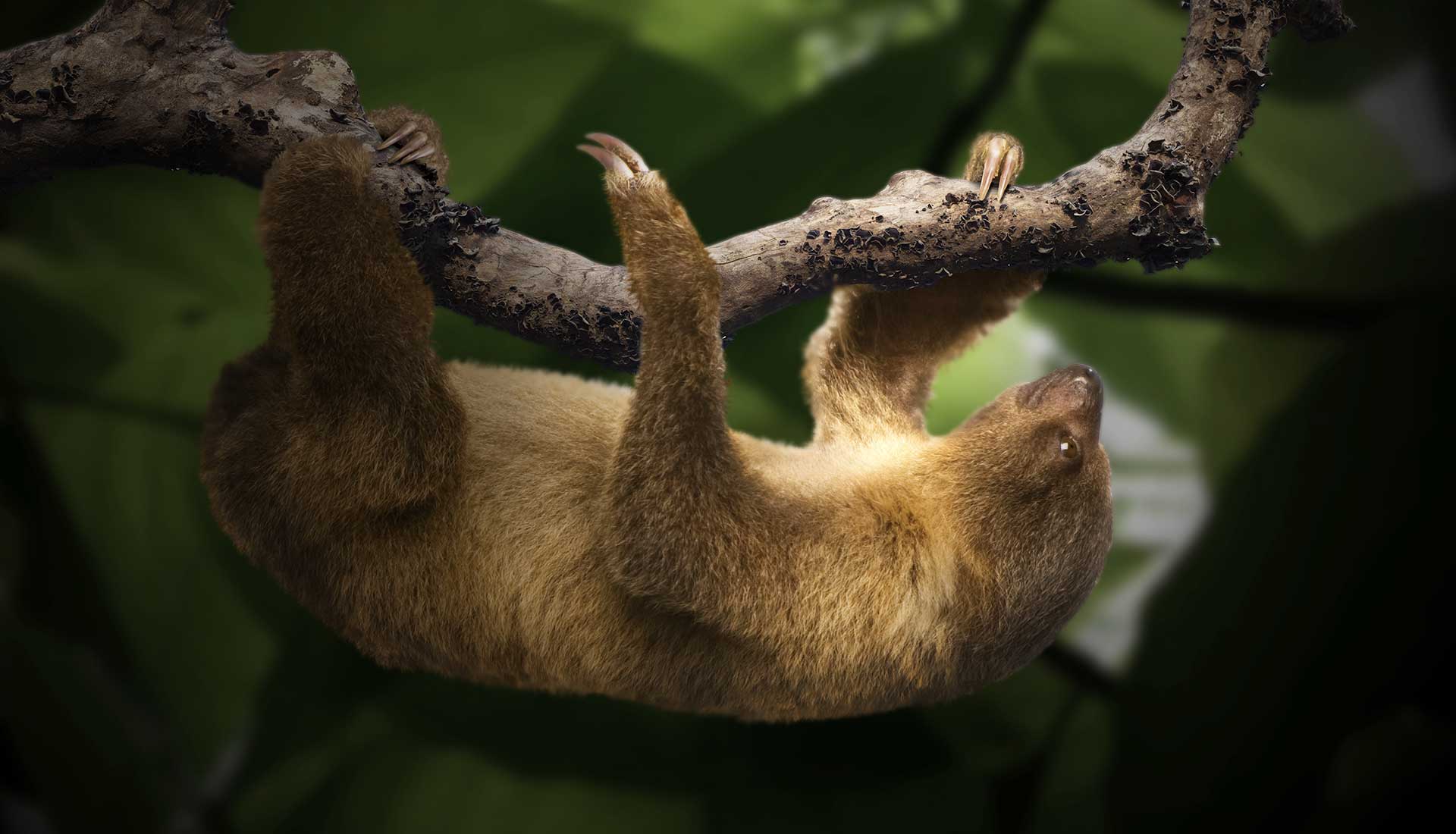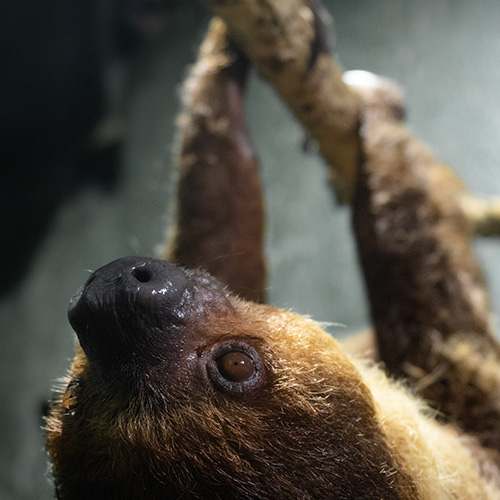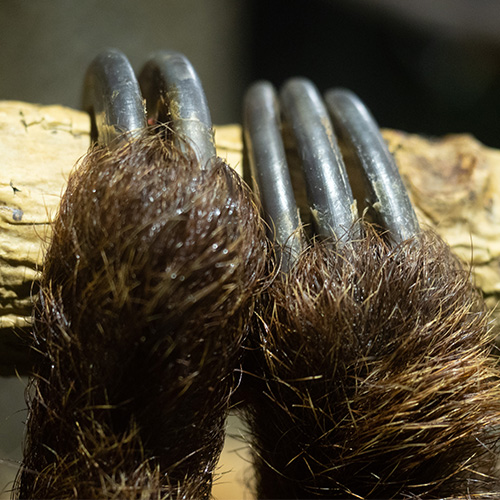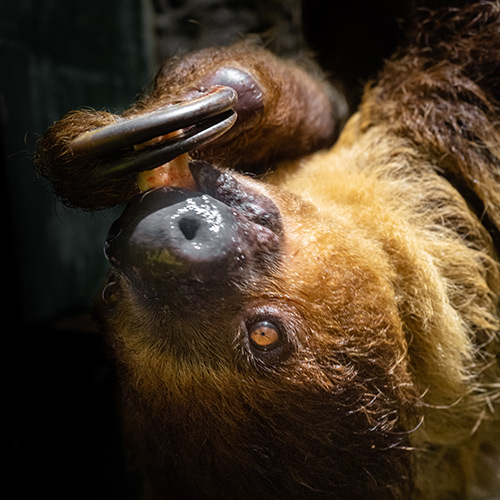







Their extremely low metabolic rate allows them to survive on relatively little food that takes days, rather than hours, to digest. Sloths spend their lives hanging in the trees, foraging for food and sleeping 15 to 20 hours per day. They even mate and give birth in the tree canopy.
Two-toed sloths have a pair of long claws on each front foot, while three-toed sloths have an extra digit to grasp the trees. They have a powerful grip but are good swimmers should they slip from the trees into a river below.
Deforestation is the biggest threat facing the six species of sloths, as they depend on the trees for food and shelter. Our two-toed sloths, Luna and BB Cop, are part of the Species Survival Plan at the Edmonton Valley Zoo.